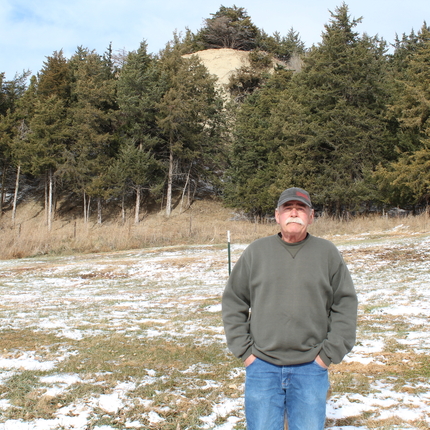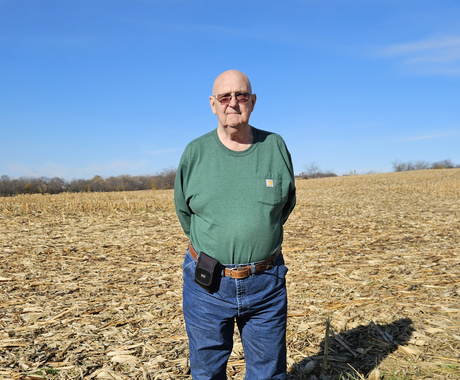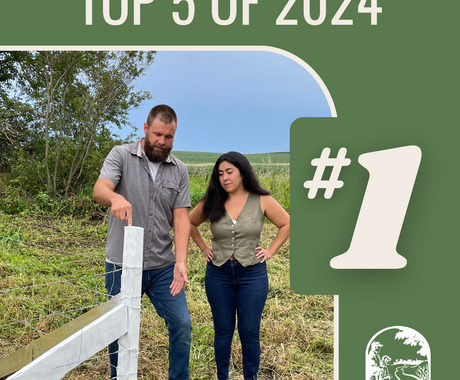By Kate Hansen, former staff member. Published in the Midwest Messenger on Dec. 24, 2019
Max Wilson grew up watching his parents raise crops and livestock on his family’s farm in Burwell, Nebraska, all the while learning the importance of land stewardship.
Today, Max continues to farm and ranch on the same land as his parents, focusing on an assortment of conservation practices that will promote the land’s health for years to come. His 1,000 acres are about 80 percent pasture and 20 percent farm ground, with the two land types divided by deep canyons.
Conservation efforts, especially grazing management practices, have benefited his grassland and wildlife health.
About 10 years ago, Max began working with his local Natural Resources Conservation Service (NRCS) office to address invasive red cedar trees on his land.
By enrolling in the Environmental Quality Incentives Program, Max got the help he needed to address the red cedars. After removing the trees, he followed up with pasture deferment and prescribed burning.
Wilson soon learned that NRCS offered the Conservation Stewardship Program (CSP) for farmers and ranchers who were already practicing conservation, but wanted to increase their efforts across their entire operation.
Through CSP, Max was able to adopt conservation-focused grazing management and to access both financial and technical assistance from NRCS to further improve his grazing practices.
Today, Max rotates his livestock around six paddocks, according to a grazing plan. His rotation varies from year to year, and he also closely monitors his grazing areas.
To monitor the health of his land, Max regularly takes photographs to determine plant productivity over time and keeps track of key forage plant heights.
“This monitoring is a good way to tell if something is overgrazed, or if the grasses are in poor condition, it’s a good thing,” Max said.
Through his CSP contract, Max has worked closely with his local NRCS office, obtaining technical assistance on his grazing management practices. His local technicians help him create grazing plans, and sometimes visit his fields to check conditions.
“[Max’s] rotation allows the grass to rest, which helps it heal from year to year,” said Brandi Johnson, a conservation soil technician at the Burwell, Nebraska, NRCS field office. “He never starts in the same pasture two years in a row. With the rest-rotation, combined with ongoing cedar tree and weed control, he has increased wildlife and grassland health.”
Max agrees that his practices have done a great deal for the overall quality of his grazing land.
A change in the 2018 farm bill may help create more success stories like Max’s. Under the new legislation, advanced grazing management was awarded increased payments under CSP.
It’s a change Max supports.
“I wish more people got support on their rotations,” he said. “[Better grazing management] would basically improve the quality of all the ranch land… better management overall would benefit everyone.”
In addition to grazing practices, Max has used CSP to utilize goats for weed control and installed wildlife escape ramps in his water tanks. He is also planning to plant a 20-acre pollinator habitat with native grasses.
When asked why he enrolls in CSP, Max replied, “Cost benefits make it practical, but I would say it’s the conservation—for the wildlife and just for taking care of the pasture grounds—that motivates me.”
Through her time at the Burwell NRCS office, Brandi has worked closely with Max over the years.
“Conservation programs and practices have helped Max address numerous resource concerns on his ranch,” she said. “Max wants to take care of what nature gave us.”





